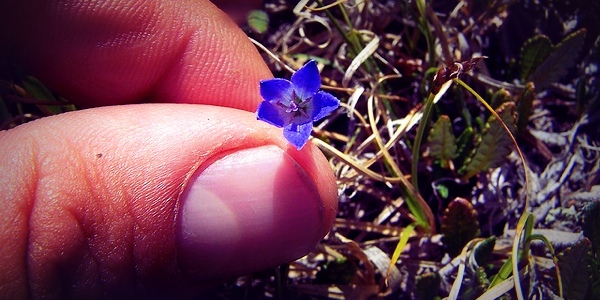You have no items in your cart. Want to get some nice things?
Go shoppingHigh-altitude obsession and ruthless competition inside the Alpine Garden Society. To get your account of your personal cult published on Litro Online, as part of our Book Club theme this month, email us at emily.cleaver@www.litromagazine.com.

You can spot us a mile off: carefully dressed, driving old but immaculate mid-range automobiles, stocked with travel rugs and thermoses and walking boots. Kagoules and cloth shopping bags. Our neat, post war houses bristle with burglar alarms and our fences are flawless, inviolable. Child free.
“…geographical delineations are available from the Director…”
We pay thousands of pounds for group holidays with ferociously knowledgeable guides. Our years are framed by monthly meetings, conferences, regional and national shows. We anticipate the arrival of the quarterly journal, its glossy, sweet smelling pages crammed with the circumspect writing and accomplished photography of other members. We suspect extravagance, sneer at show-offs, are relentlessly amateur.
Yet the objects of our hunger are most flamboyant and particular. Alpine plants. And the cable car to which we cling in our zeal for mountain flowers? The Alpine Garden Society. I had a camper van with the registration AGS for a while. It had carpet up the walls.
“…suitable for cultivation in a rock garden of moderate size or in an unheated frame or alpine house…”
I gave many tours, over the years, of the alpine displays I created. I’d say, to start off, “So, who can tell me what an alpine plant is?” They’d smile quietly – quiet people, in the main – and, more often than not, wait for me to answer my own question. So I’d say, “Technically speaking, an alpine plant is one that lives above the tree line. Meaning, in an environment so harsh that a tree cannot survive.” Then I’d say, “But, really, alpine plant lovers are greedy blighters – they’ll call anything an alpine if they fancy growing it.” Inside jokes. I guess you had to be there.
There are two things going on in my cult: one, a dogged devotion to seeing mountain plants growing in the wild; two, a painstaking obsession with growing them at home.
“…other things being equal, preference should be given to species or natural hybrids…”
But why? In a country with piddly mountains and rare snow. On a fair temperate island of herbaceous borders and topiary, of hanging baskets and allotments, where a gardener can grow almost anything?
“…no pot or pan may exceed 36 cm outside diameter…”
Alpine plants are perfectly evolved to deal with the extremes of life high up. Their strategies are many and varied. Form a dense cushion of rosettes, hunker down against the cliff to avoid desiccation by storm-force winds. Develop a dense coat of silvery hairs to shield your leaves from intense sunlight undiminished in the thin air. Spend the winters dormant, flower in the snowmelt, fruit fast in the fleeting weeks before the snows come again. To beckon to the pollinating bees, which are few and far between up high, produce brightly coloured flowers, wildly out of scale with your miniaturized foliage.
“…note that cactus spines are not considered to be foliage…”
It’s these flowers that bewitch us. We struggle, panting, across unstable screes, clamber over boulder fields which skirt the glaciers, suffer altitude sickness for the sight of a Himalayan poppy, spend long summer days in dark, chilling cloud which obscures the towering peaks above us and fogs our expensive lenses.
“…six pan classes must include at least three plants in flower or fruit…”
Back in our orderly homes, we sow from crinkly, translucent packets, seed collected (illegally, sometimes) by other members on their trips or (legally) from their gardens, distributed annually by the Society (maximum 23 batches per member, unless you are a donor or a packer, when you get more).
We swop cuttings of our best, most true, most reliable plants. We pot up our surplus seedlings for the raffle at the monthly meeting of our local group. We build ingenious complexes in our gardens to regulate heat, water, light. We construct rock gardens – not any old rock, not any old grit – in which to cultivate and display our treasures from the wild. We fret, throughout our holidays, that the custodians at home will prove incompetent or negligent.
“…don’t, whatever you do, water them over the top”
And we grow, in terra cotta pots, freestanding or sunk in sand-beds, in bulb frames, in crumbling, pockmarked lumps of tufa, in white ceramic sinks, the plants we will exhibit at the Shows.
The Shows! School halls, up and down the country, commandeered by local groups for Saturdays in every season: the almanac begins in February and ends in October. Neat ranks of tables fill the halls, their musty air redolent of teenage boys and bleach. Mattress tape stretched across the wood effect wipe clean surfaces delineates the classes and categories. From early morning we shuffle in, bearing our entries, packed into crates and cardboard boxes, stabilised by newspaper, crunched into balls.
Inevitably there is disappointment. A flower-laden scape snapped off by the stiff cuff of a blazer. A cushion spoiled, its perfect clustered rosettes bruised by a dropped notebook. An unseasonably warm night and a third of the flowers gone over.
“…they were dead certs for a place, if only that cold snap hadn’t …”
We go at our plants with tweezers and surgical scissors and paint brushes. We top up with grit, wipe down the terra cotta. Our best handwriting describes the Latin binomials and the cultivar names.
“…of two, equally effective plants, the judges will naturally prefer the less common…”
We leave the hall. The judges, a solemn huddle with clipboards, move along the tables. We turn our backs and seek solace at the stalls, where nurserymen and women shyly offer beautiful plants, rock garden stalwarts and choice rarities for the alpine house. Or at the canteen, eyeing our competitors over stewed tea and bourbon biscuits, joshing, swapping anecdotes about the Pelopponese or New Zealand or lizard orchids on the golf course at Sandwich.
“…tell you what, if the cuttings take, I’ll have a couple spare, so would you be interested in…?”
The double doors swing open. There’s a lull, only just perceptible. Who would betray how much they care by missing even half a beat?
“…no trophy should be given unless the exhibit is of a sufficiently high standard…”
We surge in but, stalled by the echo of our footsteps, feign disinterest and admire the novice entries. We loiter, not daring to find out, bypassed by local group treasurers, borne along by an air of usefulness. As we shuffle along, we reconcile ourselves to the comment, in the judge’s neat hand, that we have somehow fallen short. We crane our necks to see the winning subjects, carried aloft towards the photographer’s corner for their portraits.
“…trophies for the highest aggregate first prize points…”
We can dream. That’s what we’re good at. In plump buds, in the barren wastes of the winter rock garden, in the dry rattle of the seed head, in the dark crumble of leaf mould. We lob our hopes ahead of us and scramble after them up the slope, agog. When I joined the AGS, I was below the average age. Someone pointed out my advantage. If I were to live to my allotted three score years and ten, then I had 30 seasons ahead of me. 30 more annual memberships. 120 journals. 15 displays at Chelsea (every other year). 30 seed exchanges. 30 goes to get it right.
“…members are reminded that named cultivars and hybrids cannot be relied upon to come true…”
30 goes to try to get it right.
Email your accounts of weird clubs or societies to online@www.litromagazine.com – or make one up for our Flash Fiction Competition.
We pick the most exciting new titles out there for the Litro Book Club, and you’ll get them sent to you before they hit the shops. You’ll get access to live author Q&As, and the chance to see your reviews published on the site. It’s a great way of meeting like-minded book-lovers too. Join the Club

About Kate Steeds
Kate has worked in journalism, opera, comms and, for ten years, as a gardener.





Gardening is the good thing, whichgives the best health through fresh air for the people. Nowadays most of the people are used to growing the useful plants in their garden, it’s better to planting the medical usage plants like weed seeds, cannabis seeds and sensi seeds.
Generally we can grow the many types of plants in garden and i used to grow the medical usage plants and roses more and more. forthat i used to prefer the various natural products for their fast growth.
Gardening is the place for planting the several type of flowers, by following the simple tips and method you can grow all types of plants in your surroundings.